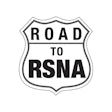Tuesday, November 28 | 3:10 p.m.-3:20 p.m. | T7-SSBR06-2 | Room S404
Malignancy rates for findings undergoing image-guided breast biopsy vary by the method of detection, according to research to be presented in this session.
In his talk, Alan Zhu from the Mayo Clinic Alix School of Medicine in Scottsdale, AZ, will present results from his team’s research, which found lower rates of malignancy with findings on common breast imaging modalities. The team also found higher malignancy rates with other imaging modalities and symptomatic detection.
Image-guided breast biopsy provides confirmation of suspicious findings on initial imaging. However, there are several methods in this area, which may have variable rates of malignancy.
Zhu and colleagues wanted to compare malignancy rates for findings undergoing image-guided breast biopsy, exploring several methods of detection. It included 24,826 biopsies in the study.
The researchers found a significantly higher malignancy rate in symptomatic methods of detection (45.4%) compared with imaging methods (28.5%, p < 0.001).
On deeper analysis, they found the highest malignancy rates in PET (59%), incidental imaging (50%), other (49.2%), clinical exam (47.7%), and self-exam (44.9%). Conversely, the team found the lowest malignancy rates in MRI (20.1%), molecular breast imaging (20.3%), ultrasound (23.6%), and mammography (31.1%).
The researchers suggested that awareness by radiologists in this area, along with imaging findings, can support informed discussions and management plans for breast cancer patients who may undergo biopsy. See what else the team found in this session.

